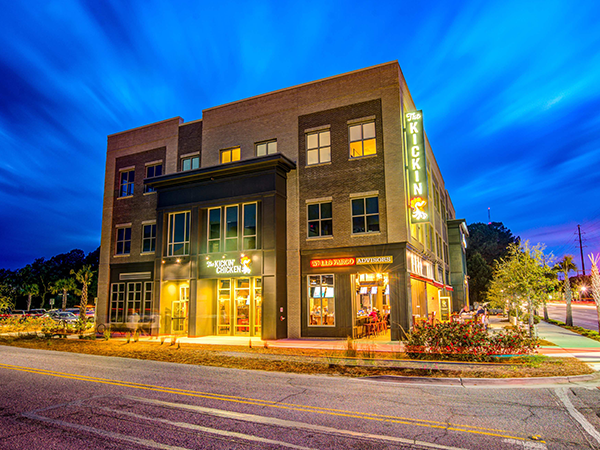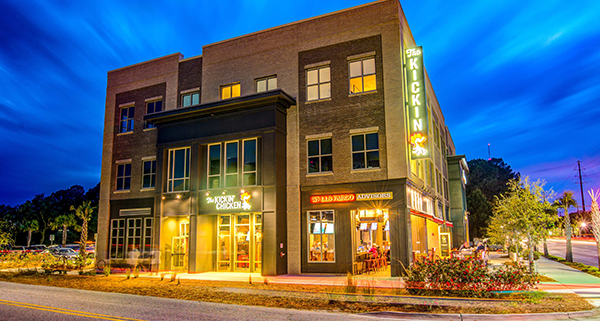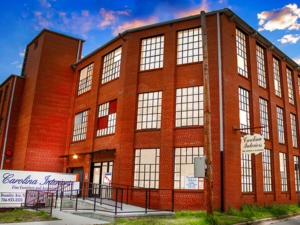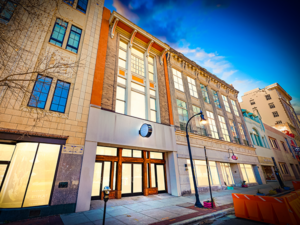
What is Mixed-Use Zoning?
Mixed-use zoning is a type of urban zoning that blends multiple types of properties that would fall into more than one standard zoning category. Mixed-use zoning is applied to places where residential, commercial, and industrial spaces are integrated. Often these developments are “walkable” or have pedestrian connections.
Types of Zoning
Zoning is a method of urban planning in which a town, city, or other municipality divides land into areas called zones, each of which has a set of regulations for new development that differs from other zones. Regulations are set in order to guide urban growth and development.
Zones may be defined for a single use or they may combine several compatible activities by use. Or in the case of form-based zoning, the differing regulations may govern the density, size, and shape of allowed buildings.
The planning rules for each zone determine whether planning permission for a given development may be granted. Zoning may specify a variety of outright and conditional uses of land. It may indicate the lot size and dimensions that land may be subdivided into or the form and scale of buildings.
The types of zoning in urban planning and development are:
- Commercial Zoning
- Industrial Zoning
- Residential Zoning
- Agricultural Zoning
- Mixed-Use Zoning
Mixed-Use Zoning
While the term “mixed-use” has become a popular buzzword in recent years, it can be ambiguous. The term has held different meanings over the past several years. Many people assume that mixed-use development is limited to a multi-story building that incorporates commercial use on the first floor with residential uses on the upper floors. This type of asset is labeled as vertical mixed-use development. On the contrary, there is more to mixed-use zoning than what is included in that model.
A more accurate characterization of a mixed-use development entails the following:
- A walkable community with pedestrian connections
- Three or more notable income-generating uses (such as residential, retail/entertainment, hotel, office, and/or cultural/recreation)
- Integration and compatibility of land uses
The mix of uses allows for people to live, work, shop, and play all in one place, creating a go-to spot for people from other neighborhoods.
Vertical Mixed-Use Development
This combines a variety of uses in the same building. Lower floors typically provide for public uses, whereas the upper floors provide for private uses. For example, a ground floor with retail shops and restaurants, a second floor with professional offices, and the uppermost floors comprised of residential units, such as condos or apartments. In urban areas, it’s not uncommon to find an entire neighborhood or block made up of vertical mixed-use buildings.
Horizontal Mixed-Use Development
Horizontal mixed-use developments consist of single-use buildings within a mixed-use zoning district parcel, which allows for a wide variety of land uses in a single development project. In urban areas, this mixed-use approach dodges the financial and coding complexities that come with vertical mixed-use development, while achieving the aim of placemaking that comes with combining complementary uses in one place. In rural areas, this approach offers the advantage of sharing amenities and utilities while providing an easier way to have multiple uses within walking distance.
Mixed-Use Walkable Neighborhoods
With a wide variety of possibilities, mixed-use walkable neighborhoods combine vertical and horizontal use in an area that is ideally a 5-10 minute walking distance of a neighborhood center.
Examples of Mixed-Use Developments
Staten Island Urby – Staten Island, NY
Staten Island Urby is a 571-unit mixed-unit development that features 35,000 square feet of restaurants, retail space, residential units, parks, and walking paths. The project offers a wide variety of amenities – in addition to the public outdoor spaces. There’s a two-story fitness center, a pool, a bodega, an entrance cafe and coffee shop, a communal kitchen with flex spaces for cooking classes, and an urban farm that’s situated above the parking garage. The Staten Island Urby is conveniently adjacent to the Staten Island Railroad Station and a four-minute subway ride to the Staten Island Ferry.
Liberty Lorton – Lorton, VA
Liberty Lorton is a mixed-use development comprising apartments, townhouses, single-family homes, retail space, amenities, and commercial space. Liberty Lorton is also an example of adaptive reuse because it was formerly a prison. The mixed-use development currently offers walkable access to parks, tot lots, and a cross-country trail that cuts through the project.
The Cove – Seattle, Washington
The Cove is a 60-unit 50,000 square foot mixed-use development located in the Capitol Hill neighborhood of Seattle, Washington. This project was designed with sustainability in mind, with green features such as:
- Triple glazed windows making a significant difference in energy performance
- Sound attenuation ensuring that residents aren’t disturbed by traffic noises from the busy neighborhood
- Heating and air-conditioning supplied b a high-efficiency split heat pump
Poste – Cincinnati, Ohio
Poste is a mixed-use property in the Walnut Hills neighborhood of Cincinnati, Ohio. The 124-unit property comprises 5 two-bedroom townhomes, 18 studio apartments, 28 two-bedrooms, and 73 one-bedrooms, along with a resident lounge, interior and exterior bike parking and storage, coffee and tea bar, and 4,345 square feet of commercial space. The units are pet-friendly and include amenities such as valet trash and recycling pickup and cable and internet.
Investing in Mixed-Use Properties
Investors can benefit from mixed-use zoning due to the multiple asset types a mixed-use development contains. Having mixed-use properties in an investment portfolio provides diversification. Diversification lowers the risk to investors due to multiple types of properties with a variety of tenants, meaning that losing tenants or having vacancies in one property will not cause detrimental damage.
Mixed-use developments also provide investors with longer leases, providing more stability in cash flow income from both residential and commercial properties. Mixed-use zoning attracts commercial and residential tenants that are willing to pay higher rent in exchange for higher quality facilities and proximity to restaurants, offices, retail spaces, and other businesses. These types of tenants are more likely to properly maintain the property, which in turn will attract other tenants. All of these factors result in shorter vacancy cycles providing a steady and reliable income stream.
Mixed-use developments with property management are capable of managing multiple types of properties at once. Property management in mixed-use developments is also more dependable and capable of managing multiple types of property at once. Operations typically run smoothly and management issues will not hinder profit.
There are several factors investors should consider when deciding whether or not to pursue a mixed-use development project:
- Efficient Design: The mixed-use trend continues to grow, and so do the benefits of a successful design. As a fundamental component, the visual appeal and layout of a development are critical to its prosperity, which will impact demand, vacancies, and maintenance. The most common design styles include vertical buildings, horizontal blocks, and walkable neighborhoods.
- Promising Location: A successful development project will typically be located in a promising area, although not every scenario is the same. A residential redeveloper will typically seek areas poised for growth, with housing markets that display certain criteria. In most cases, this will include rising job growth, low unemployment, new housing construction, city development projects on the rise, and popular businesses moving to the area.
- Amenities: From retail stores and restaurants to parks and local attractions, the one common trait among successful mixed-use development projects is proximity to amenities, otherwise known as walkability. A report by the National Association of Realtors found that millennial homebuyers seek walkability as a mode of transportation by 12 percentage points over driving. Because the concept of mixed-use development aims to provide the life-work-play lifestyle, the one must-have feature is the ability to walk to destinations and major transportation hubs conveniently. The biggest appeal of a mixed-use development is the ability to shop, eat, and mingle in the vicinity of where you live.
- Affordability: With home and rental prices on the rise, mixed-use developments offer a slight advantage over traditional home purchases in terms of affordability. The majority of developments aim to identify the challenges in a particular community and offset them, despite economic and physical complexities.
- The Right Tenants: The final ingredient to a successful mixed-use development project is simply having the right tenants. Whether residential or commercial, the right blend of renters can help develop a sense of community around mixed-use developments. Additionally, by creating active and connected communities where people can work, rest, sleep, and play, the demand for those properties will only continue to grow in popularity.
Consult a SIG Advisor
If you’re interested in learning more about investing in a mixed-use development, get in touch to work with a SIG advisor. Our experts are uniquely positioned to help you get the most out of your investment. We have brokers that are designated experts in each CRE product type to explore the different assets to add to your investment portfolio, including properties with mixed-use zoning.
Want to learn more? Call 844.4.SIG.NNN or contact us here to talk about growing your commercial real estate portfolio with our team.
By submitting your information and signing up for email updates, you agree to SIG Online Terms of Use



